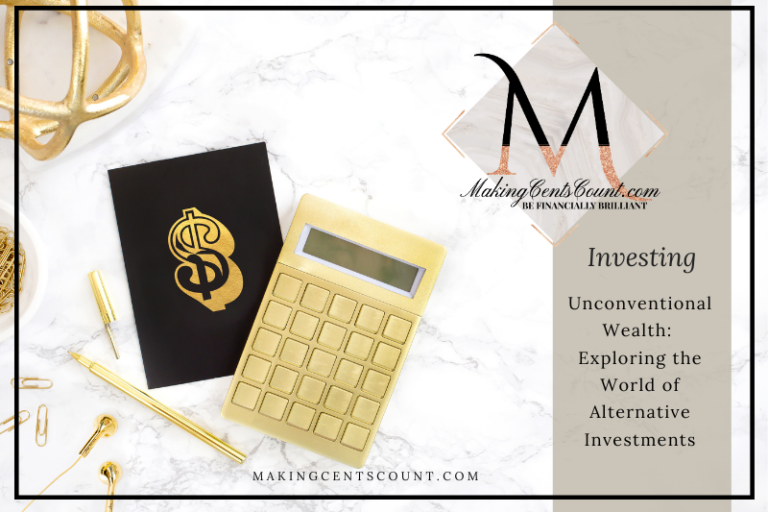Get Ready for an Adrenaline-Pumping Journey: Unraveling the Stock Market
Estimated reading time: 10 minutes
Get ready for an adrenaline-pumping journey as we unravel the stock market! Stocks – they can invoke excitement, fear, fascination, and a myriad of other emotions. But before you dive into the exhilarating world of trading, it’s crucial to grasp the fundamentals of the stock market. In this in-depth exploration, we will dissect the code of the stock market and equip you with the knowledge needed to navigate this thrilling realm. So, fasten your seatbelts and prepare to decode the language of the stock market!
Table of Contents
- Mastering the Stock Market: Unveiling the Art of Buying Low + Selling High
- Cracking the Code: Demystifying the Stock Market
- Maximize Gains, Minimize Risks: Unleashing the Power of Mutual Funds
- Decoding the Language of Stock Market Investments
- Comparing Individual Stocks to Mutual Funds
- Revealing the Power of Consistent and Savvy Stock Market Investing
- Dive In Now: Unleash Your New-Found Stock Market Knowledge
- The Key to Financial Mastery: Your Path to Investment Success
- Making Cents Count Financial Organizer
Are you ready to start investing, control your finances, and prepare for retirement? Join our amazing community! You’ll receive exclusive financial tips from Making Cents Count, as well as unlimited FREE access to our resource library full of money-saving tools and guides.
Mastering the Stock Market: Unveiling the Art of Buying Low + Selling High
You’ve probably heard people say the trick to the market is “buy low; sell high,” but the real tactic isn’t quite that simple. Gaining market knowledge is a gradual process, enabling you to recognize when your investment has reached its peak, leveled off, or (thankfully) stopped plummeting. Whether you’re a novice in the stock market or a seasoned investor, you’re bound to embark on an emotional rollercoaster throughout the journey.
Whether the market is on the rise (bullish) or if there’s a sell-off (bearish), stock trading is certainly not for the faint of heart. But even though the market often seems (and actually is) scary, the secret to success is long-term consistency and patience guided by unbiased information to help you make wise choices.
We won’t go into all of that today. I want to start you out with a basic understanding of the stock market. This includes the terminology, and how to find your comfort zone that allows you to sleep at night.
Cracking the Code: Demystifying the Stock Market
Imagine the thrilling carnival rides that spin you around until you feel a tinge of green. Now, envision the stock market on certain days, surpassing even that level of excitement. Prepare yourself for an exhilarating rollercoaster of emotions!
During client meetings, I often gain early insights into their investment experience and comfort level with the stock market. What I consistently observe is that clients are often driven by the desire to purchase a “hot” individual stock. Perhaps they received a tip from a friend or came across a company in the news, hoping for a quick financial gain.
In nearly all instances, their inclination (as well as their comfort level) led them towards a mutual fund (also referred to as a traditional or open-ended mutual fund). Mutual funds can be a preferable choice for less experienced investors. While not as alluring as individual stocks, they carry lower risk and aid in instilling confidence in newer investors.
Maximize Gains, Minimize Risks: Unleashing the Power of Mutual Funds
To grasp the advantages of mutual funds as an investment option, let’s delve into the contrast between open-end and closed-end mutual funds. By doing so, we can gain a comprehensive understanding of why mutual funds frequently provide a more comfortable and rewarding investment experience.
- Open-end mutual funds, the epitome of liquidity, offer investors a constant flow of shares. With an ever-changing number of outstanding shares, these traditional funds provide unparalleled flexibility and adaptability. Invest confidently in the dynamic world of open-end mutual funds.
- Closed-end mutual funds function similarly to individual stocks as they are traded on an exchange. Unlike open-end funds, closed-end funds have a fixed number of shares offered through an initial public offering (IPO), making them “closed.” These shares can be traded intraday on an exchange, just like stocks.
Within our resource library, you’ll find a collection of guides that can provide valuable insights into mutual funds. If you believe your investment risk tolerance aligns with mutual funds, this presents an excellent opportunity worth exploring.
When it comes to investing, your personal risk tolerance is key. You have a wide array of options, ranging from conservative investments to growth funds and even speculative ventures. It’s crucial to understand your risk tolerance so you can confidently choose an investment that aligns with your comfort level.
Decoding the Language of Stock Market Investments
If the stock market is your preferred investment choice, it’s crucial to acquaint yourself with its terminology and background. Having a comprehensive understanding of the stock market is vital to minimizing investment risks, both in the short and long-term. Here’s a breakdown of conservative funds to speculative funds, providing definitions that can help you navigate this complex landscape.
Money Market Fund
A money market fund engages in investing in short-term debt securities, typically accompanied by check-writing privileges. It serves as a conservative investment option, suitable for individuals with a lower risk tolerance.
Income Fund
An income fund offers investors a steady stream of revenue, which is pretty straightforward. This type of fund is particularly suited for retirees, given its conservative nature. Typically, as you approach retirement, it is advisable to adopt a more conservative approach to risk management.
Balanced Fund
The name of this fund is self-explanatory – it combines the best of both worlds: growth and income funds. This balanced approach ensures an optimal investment strategy that captures the benefits of both fund types.
Growth Fund
As we delve into growth funds, we venture into greater risks. This particular fund tends to be more diversified, presenting a heightened potential for growth (albeit accompanied by increased risk, naturally).
Specialized (Sector) Fund
A specialized fund focuses primarily on investing in a specific industry or geographical area. I will elaborate on this concept in the example below.
International or Global Fund
International funds invest in companies located outside the investor’s home country, while Global Funds invest in countries worldwide, including the investor’s home country. Both types of funds carry significant risk due to currency fluctuations, political factors, and global influences that can greatly affect their value.
Hedge Fund
Recall the rollercoaster of emotions and intense sensations I mentioned earlier? Well, brace yourself! Hedge funds utilize capital leverage through buying on margin and collateralized borrowing to maximize their investments. They employ various strategies, including short sales and speculative investments. Or, as I often quip, “legalized gambling.” Notably, hedge funds tend to fare better in a bearish market. So, when the market takes a nosedive, hold on tight and ride it out!
Comparing Individual Stocks to Mutual Funds
Now that we have clarified the definitions, let’s delve into the distinction between individual stocks and open-end (traditional) mutual funds. We will explore their unique characteristics and uncover the nuances that set them apart.
Individual Stock Swings: Are they a Blessing or a Curse?
Let’s say that you buy 100 shares of Caterpillar (CAT) stock. By the end of the trading day, that particular stock will either end on a positive note or a negative one. Your shares might be slightly more valuable than your initial investment or, alternatively, slightly less so.
By investing in a mutual fund, you liberate yourself from the whims of a single company. Mutual funds combine a variety of stocks, “pooling” them together to significantly reduce your risk. This diversification not only enhances your potential returns but also safeguards your investments.
The Untold Story of Mutual Funds: Not Sexy, but Sensible
In this example, if you invested in a mutual fund that included Caterpillar AND John Deere (DE), Home Depot (HD), and Lowe’s (LOW), the landscape would change. By pooling these assets into a single mutual fund, it could take on the form of a specialized (sector) fund. The reason being that these entities belong to a specific industry, while simultaneously functioning as competitors. This diversity is what cultivates the lower risk associated with mutual funds, as opposed to holding individual stocks from these corporations.
Diversification: The Key to Minimizing Losses
Imagine you’re holding on to individual Caterpillar stock and unfortunately, Caterpillar implodes. In such a scenario, your investment would be completely wiped out. However, if you had invested in a specialized mutual fund that includes Caterpillar, John Deere, and other companies, your risk would be significantly lower. If Caterpillar is non-existent, only the value of that specific portion in the mutual fund would be affected, while the value of John Deere’s portion (the competitor) is likely to increase. This diversification helps protect your investment and mitigates potential losses.
Mutual funds demonstrate their collective prowess by providing a comparatively secure and less risky investment option. Witness how these funds harmoniously collaborate to create an environment of financial stability and peace of mind.
Revealing the Power of Consistent and Savvy Stock Market Investing
As I mentioned earlier, the key to successful investing lies in maintaining consistency. The adage “slow and steady wins the race” holds particularly true in the realm of investments.
A simple yet effective method to maintain consistent investments is by implementing Dollar Cost Averaging (DCA). Although it may sound complex, DCA simply involves investing the same dollar amount on a fixed date every month. This strategy ensures stability and ease in managing your investments.
Utilizing Dollar Cost Averaging (DCA) is an excellent method to initiate your investment journey. By configuring automatic transfers from your checking, savings, or money market account (essentially any cash account), you can steadily accumulate your investments at an accelerated pace.
Dollar-cost averaging is a strategy that helps mitigate the volatility of the stock market by consistently investing each month. During months when the average share price is higher, you’ll acquire fewer shares, whereas during months when the average share price is lower, you’ll be able to purchase more shares. This approach ensures a smoother investment experience while maintaining the same underlying principle.
Dive In Now: Unleash Your New-Found Stock Market Knowledge
Are you prepared to begin? I can confidently assure you that as you become more acquainted with the terms and fundamentals, you will feel increasingly at ease with understanding the stock market. A significant aspect revolves around mastering the art of knowing when to buy and sell, while also maintaining patience during the remaining periods.
When it comes to investing, it is crucial to align your strategy with your risk tolerance and personal comfort level. For those seeking a more stable and predictable approach, mutual funds offer a reliable option. On the other hand, if you are prepared to embrace some volatility and are driven by the excitement of the market, investing in individual stocks can be an exhilarating journey. Remember, arming yourself with knowledge and a deep understanding of the market is key to navigating both bullish and bearish trends. By staying informed and making informed decisions, you can confidently navigate the ever-changing landscape of the financial world. Happy investing!
The Key to Financial Mastery: Your Path to Investment Success
If working on your finances is one of your goals right now (or, maybe it’s been a goal for some time), I suggest starting with the Making Cents Count Financial Organizer.
Our financial organizer is the robust answer you need. The organizer is our DIY financial services option, providing you with the tools to eliminate financial overwhelm.
In the exclusive Making Cents Count Financial Organizer, you’ll get:
- Clear strategies to get your finances under control
- Processes to organize and streamline your investments
- Guidance to track your legal documents, tax information, and permanent records
- Markers to know when you should meet with an attorney to establish a will or trust
- Templates, checklists, and step-by-step actions
- Insights on the financial must-haves to build a secure future
- Detailed How-To Guide for optimal results
If you want financial confidence, grab the Financial Organizer, and get results that fit *your* lifestyle!
Making Cents Count Financial Organizer
Once you get your budget rolling, check out my post on 6 Simple Steps to Get Financially Organized. This post also includes a helpful checklist available in my Resource Library (free to access).
Admittedly, this particular checklist has a larger-scale focus on your overall financial picture, but I genuinely feel that getting your finances organized is essential.
I’m so excited to invite you to join our Financial Success Society Waitlist! Our enrollment opens soon (so don’t miss a chance to get on the notification list). Your journey to financial success is unique and with this exclusive membership, you’ll receive the guidance you desire, enabling you to move financially forward, no matter where you are in your financial journey. At Making Cents Count, we offer an array of outstanding products and services to help you get control of your finances so they won’t control you!







